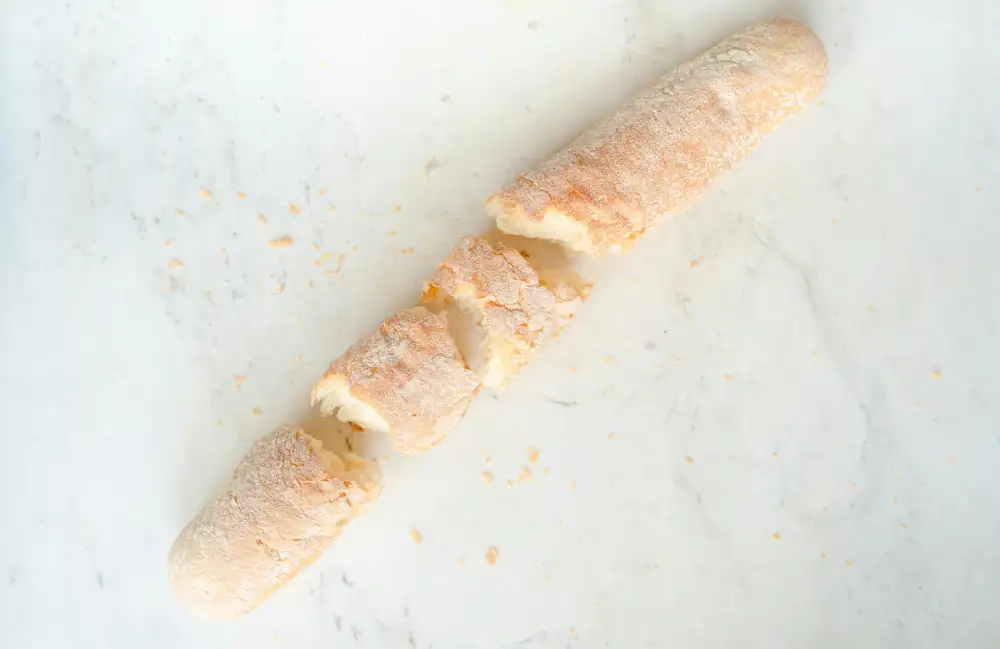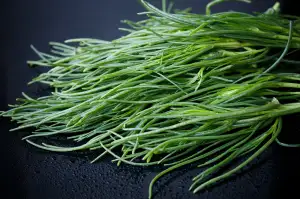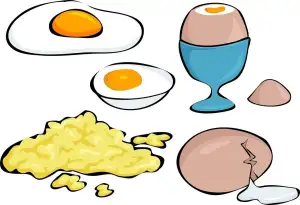Deliciously Nutty: Unleashing the Flavor of Rye Bread in Your Kitchen - Dive into Our Mouthwatering Rye Bread Recipes!

Rye bread, with its distinct nutty flavor and dense texture, is a beloved staple in many cultures around the world. Made from rye flour, this bread offers a unique taste that sets it apart from traditional wheat bread. Whether you enjoy it as a sandwich or as a side to your favorite soup, rye bread adds depth and richness to any meal. Join us on a journey to discover the wonders of rye bread and explore its versatility in the kitchen. Get ready to tantalize your taste buds with our mouthwatering rye bread recipes!
History and Origins of Rye Bread
Rye bread has a long and fascinating history that dates back centuries. Its origins can be traced to Northern Europe, where rye was one of the few grains that could withstand the harsh climate. The cultivation of rye began around 4000 BC in what is now modern-day Turkey. From there, it spread to Central and Eastern Europe.
In medieval times, rye bread became a staple food for peasants due to its affordability and ability to grow in poor soil conditions. It was often referred to as "the bread of the poor." Rye bread gained popularity among the working class because it provided sustenance and energy for long hours of labor.
During the Middle Ages, rye bread also played a significant role in religious rituals. Monks and nuns would bake rye bread for their communities, using traditional methods passed down through generations.
As European settlers migrated to North America, they brought with them their love for rye bread. In fact, rye was one of the first crops planted by European settlers in America. Rye bread quickly became a staple in many households, particularly among immigrant communities.
Today, rye bread continues to be beloved around the world for its distinct flavor and nutritional benefits. Its rich history is a testament to its enduring appeal as a versatile and delicious food choice.
Health Benefits of Rye Bread
Rye bread not only tantalizes our taste buds, but it also offers numerous health benefits. Packed with fiber, rye bread aids in digestion and helps maintain a healthy weight by keeping us feeling fuller for longer. It is also rich in vitamins and minerals like iron, magnesium, and zinc, which are essential for our overall well-being. Additionally, rye bread has a lower glycemic index compared to wheat bread, making it a great choice for those managing their blood sugar levels. So indulge in the deliciousness of rye bread while reaping its nutritional rewards!
Popular Varieties of Rye Bread
Rye bread comes in a variety of delicious forms, each with its own unique flavor and texture. Here are some popular varieties you should try:
1. German-style Rye Bread: This dense and hearty bread is made with a combination of rye flour and wheat flour. It has a dark crust and a tangy, slightly sour taste.
2. Russian Black Bread: Known for its deep, dark color, this bread is made with a mix of rye flour, molasses, and sometimes coffee or cocoa powder. It has a rich, earthy flavor that pairs well with smoked fish or pickled vegetables.
3. Swedish Limpa Bread: This sweet and aromatic bread is made with rye flour, orange zest, fennel seeds, and sometimes anise seeds. It has a light texture and is often enjoyed with butter or cheese.
4. Jewish Rye Bread: A staple in Jewish delis, this bread is typically made with caraway seeds for added flavor. It has a chewy texture and pairs perfectly with corned beef or pastrami.
5. Finnish Ruisleipä: Made primarily from whole grain rye flour, this dense bread has a slightly sweet taste and is often topped with butter or cheese.
These are just a few examples of the many delicious varieties of rye bread available. Each one offers its own distinct flavor profile that can elevate any meal or snack time experience.
Traditional Rye Bread Recipes
1. Classic Russian Black Bread: This dense and flavorful bread is made with a combination of rye flour, wheat flour, and a touch of molasses. It pairs perfectly with hearty soups and stews.
2. German Pumpernickel: This dark and moist bread is made with coarsely ground rye flour and a long fermentation process. It has a rich, earthy flavor that is perfect for sandwiches or as an accompaniment to cheese.
3. Swedish Limpa Bread: This slightly sweet bread is flavored with orange zest, fennel seeds, and anise seeds. It is great for breakfast or as a snack with butter or cream cheese.
4. Jewish Sour Rye Bread: Made with a sourdough starter, this tangy bread has a chewy texture and a distinct flavor. It is often used for making deli-style sandwiches like pastrami or corned beef.
5. Finnish Ruisleipä: This traditional Finnish rye bread is made with 100% rye flour and has a dense texture. It is typically sliced thin and enjoyed with butter, cheese, or smoked fish.
These traditional rye bread recipes showcase the versatility of this ancient grain and its ability to add depth of flavor to any meal. Give them a try in your kitchen to experience the true essence of rye bread!
Creative Ways to Enjoy Rye Bread
Rye bread is not just a staple for sandwiches; it can be enjoyed in various creative ways. Here are some ideas to unleash the full potential of rye bread in your kitchen:
1. Rye Bruschetta: Toast slices of rye bread and top them with fresh tomatoes, basil, and a drizzle of olive oil for a delicious twist on traditional bruschetta.
2. Rye Bread Pudding: Transform stale rye bread into a delectable dessert by making a bread pudding with custard, cinnamon, and raisins. Serve warm with a dollop of whipped cream.
3. Rye Bread Croutons: Cut rye bread into bite-sized cubes, toss them with olive oil, herbs, and spices, then bake until crispy. These flavorful croutons are perfect for adding crunch to salads or soups.
4. Rye Bread French Toast: Dip thick slices of rye bread in a mixture of beaten eggs, milk, and vanilla extract. Cook them on a griddle until golden brown and serve with maple syrup or fresh fruit.
5. Rye Bread Stuffing: Use cubed rye bread as the base for a savory stuffing during holiday meals. Add onions, celery, herbs, and broth for an aromatic side dish that pairs perfectly with roasted meats.
6. Rye Bread Pizza: Replace the traditional pizza crust with thin slices of toasted rye bread. Top it with your favorite sauce, cheese, and toppings before baking until bubbly and golden.
7. Rye Bread Panzanella Salad: Tear stale rye bread into chunks and combine it with ripe tomatoes, cucumbers, red onions, and fresh herbs in a tangy vinaigrette dressing. Let it sit for a while to allow the flavors to meld together.
Get creative in your kitchen and explore the endless possibilities that rye bread has to offer. From sweet to savory, there's no limit to the delicious ways you can enjoy this nutty and flavorful bread.
Tips for Baking Perfect Rye Bread at Home
1. Use the right flour: Rye flour can be dense and sticky, so it's important to use a combination of rye flour and bread flour to achieve the perfect texture.
2. Add vital wheat gluten: Rye flour lacks gluten, which is essential for a good rise. Adding vital wheat gluten will help improve the structure and texture of your rye bread.
3. Don't over-knead: Unlike wheat bread, rye bread requires less kneading. Over-kneading can result in a dense loaf. Mix the dough until it comes together, then let it rest for 10-15 minutes before shaping.
4. Add moisture: Rye flour absorbs more liquid than other flours, so make sure to add enough water or other liquids to keep the dough moist and pliable.
5. Use a sourdough starter: Traditional rye bread is often made with a sourdough starter, which adds depth of flavor and helps with fermentation. Consider using a sourdough starter for an authentic taste.
6. Give it time to rise: Rye bread takes longer to rise compared to wheat bread due to its lower gluten content. Be patient and allow your dough ample time to double in size before baking.
7. Bake at the right temperature: Preheat your oven well and bake your rye bread at a slightly higher temperature than you would with wheat bread. This will help develop a crispy crust while ensuring the inside is fully cooked.
8. Steam your oven: To achieve that classic crusty exterior, create steam in your oven by placing a pan of hot water on the bottom rack during baking or spritzing water onto the sides of the oven.
By following these tips, you'll be able to bake perfect rye bread at home that's flavorful, moist, and has a delightful texture!
In conclusion, rye bread is a true culinary gem that deserves a place in every kitchen. Its rich history and origins, along with its numerous health benefits, make it a must-try for any food enthusiast. Whether you prefer the traditional varieties or want to explore creative recipes, rye bread offers endless possibilities for flavor and texture.
By incorporating rye bread into your diet, you can enjoy its nutty and complex flavors while reaping the benefits of its high fiber content and essential nutrients. From classic sandwiches to innovative dishes like rye bread pudding or croutons, there are countless ways to savor this versatile ingredient.
If you're feeling adventurous, why not try baking your own rye bread at home? With a few tips and tricks, you can achieve that perfect crust and soft interior that will have your taste buds dancing with delight.
So go ahead, embrace the richness of rye bread and let its unique flavors elevate your culinary creations. Whether you're enjoying a simple slice with butter or experimenting with new recipes, rye bread is sure to add depth and character to every bite. So dive in and discover the delicious world of rye bread today!
Published: 09. 02. 2024
Category: Recipes



